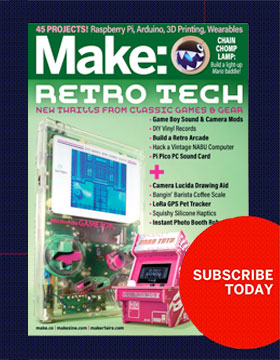The Norwegians have a history of exploration, inventiveness, and technical leadership, and this past weekend’s Nordic edition of MakerCon highlighted these elements through two insightful days of speakers and workshops.
Held on a drizzly but active Friday and Saturday at the Blå complex in the trendy, formerly industrial Grünnerløkka section of Oslo, Noway, the event felt as much like a brainstorming gathering as it did a presentation of projects. Organizers Jon Haavie and Roger Antonsen arranged the first day’s presentations into two segments: the impact of Makers and 3D printing. Each round of speakers was capped by a Q&A session that brought them all onto the stage to further converse with each other and the intimate audience. I spoke about the history and evolving future of Making — and how it ties to Norway — and helped moderate the onstage discussions.
The second day continued the talks, but also added in a series of workshops in the attached, partially-assembled makerspace — scratch-building quadcopters, hacking 3D printers (run by Ultimaker founder Erik de Bruijn), combining digital flexibility into analog print making, and more. The attendees were strongly engaged with the talks and the activities.
One main takeaway from the weekend: Norway is poised to be a major player in the Maker world. It’s responsible for the creation of the AVR architecture in the Atmel chips used in most Arduino boards, as Atmel’s Jo Uthus explained. It has a growing network of makerspaces and FabLabs, detailed by Fellesverkstedet’s Jens Dyvik and Graham Hayward. It’s the second-largest purchaser of OpenROVs, noted by David Lang. Its academics are working on simplifying and beautifying the desktop 3D printer, seen in the presentation by Polarworks. And much more.
The output makes sense, given the region’s history. Firstly, the Norwegians are explorers. Starting with the Vikings, continuing to Roald Amundsen, the first person to navigate the Northwest Passage, and Thor Heyerdahl, who rebuilt and sailed a traditional pre-Columbian watercraft from Peru to Polynesia, the Norwegians have always been undertaking extreme travel and research. Amundsen’s logs about coping with the treacherous Arctic sea, for instance, proved invaluable to future ship designers who needed to improve their crafts.
Secondly, it’s a technology-focused country. Rich with natural resources, primarily oil found in offshore reserves, Norway has a strong emphasis on engineering. The city of Trondheim, located 300 miles north of Oslo, is the tech center of the country, rich with various universities and museums dedicated to science and technology. It’s there that the AVR architecture was born.

This was the first MakerCon outside of the US, after successful launches in Mountain View and New York earlier this year. The event marks Norways’s fourth “Maker” activity in just a year and a half, starting with its inaugural Oslo Mini Maker Faire in April 2013, graduating to a full Maker Faire in January 2014, and a successful kickoff in Trondheim this past summer. At the end of MakerCon, organizers Haavie and Antonsen took the stage to thank everyone, and to announce that they’d be bringing Maker Faire back to Oslo in 2015.
From what I saw, it should be a good one.
0 thoughts on “Wrapping Up a Funky, Fresh First Nordic MakerCon”
ADVERTISEMENT
Join Make: Community Today










Good writeup, Mike. The guys now also published most of the videos: https://www.youtube.com/user/MakerConNordic/videos
-Jo
Watch all the talks from MakerCon here:
https://www.youtube.com/user/MakerConNordic/videos
Enjoy these pictures from MakerCon! We think they are beautiful!
https://www.flickr.com/photos/makerconnordic/